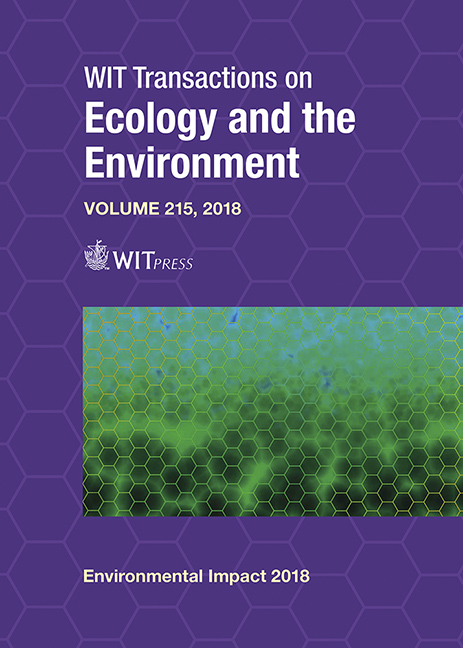LANDFILL MINING INTERVENTION ON MUNICIPAL SOLID WASTE SITES
Price
Free (open access)
Transaction
Volume
215
Pages
9
Page Range
3 - 11
Published
2018
Paper DOI
10.2495/EID180011
Copyright
WIT Press
Author(s)
MAURIZIO BUCCELLA, ELPIDIO MAISTO, GIOVANNI PERILLO, GIOVANNI SOLINO, AUGUSTO ZIPPO
Abstract
Landfill mining (LFM) is an intervention on existing landfill sites aimed at recovering volumes, in order to make them available for a new use, and to standardize the same sites according to new safety criteria in compliance with the new technical and environmental regulations. This paper analyses the environmental impact issues related to the LFM project designed for two landfills located in San Tammaro, in the Province of Caserta, Italy. The first (called Maruzzella 1), has an area of about 45,000 square meters and it was used for urban solid waste from 1996–1998, for a total volume of about 500,000 cubic meters. The second (called Maruzzella 2), located adjacent to the first, has an area of about 55,000 square meters and it was used for urban solid waste from 1998–2000, for a total volume of about 700,000 cubic meters. Through the complete removal of the waste deposit inside the landfill body it has made it possible to achieve some very important results: 1. Action of the environmental impact connected with the presence of landfills by removing of the entire amount of waste and the subsequent inerting of dangerous fractions; and 2. The recovery of the materials present in the landfill: the clusters of waste, that would otherwise be left sine die inside old landfills representing a continuous threat to the environment, are instead valued with consequent obtaining of economic benefits. In fact, more than 70% of the soil contained in the old landfill was recovered and was reused on site and more than 80% of inert materials deriving from construction and demolition has been recovered and started for re-use activities.
Keywords
landfill, recovery, environmental impact





